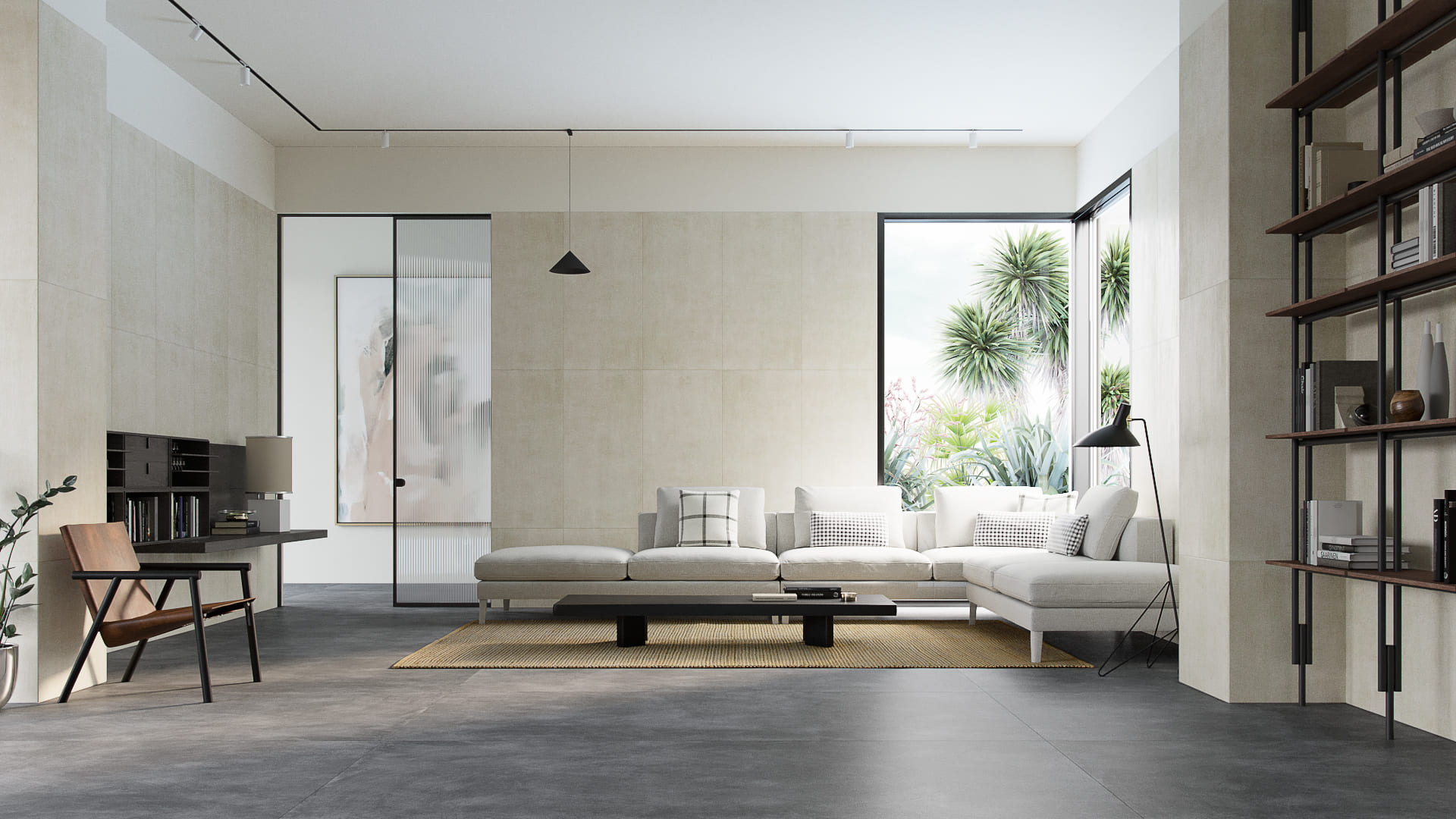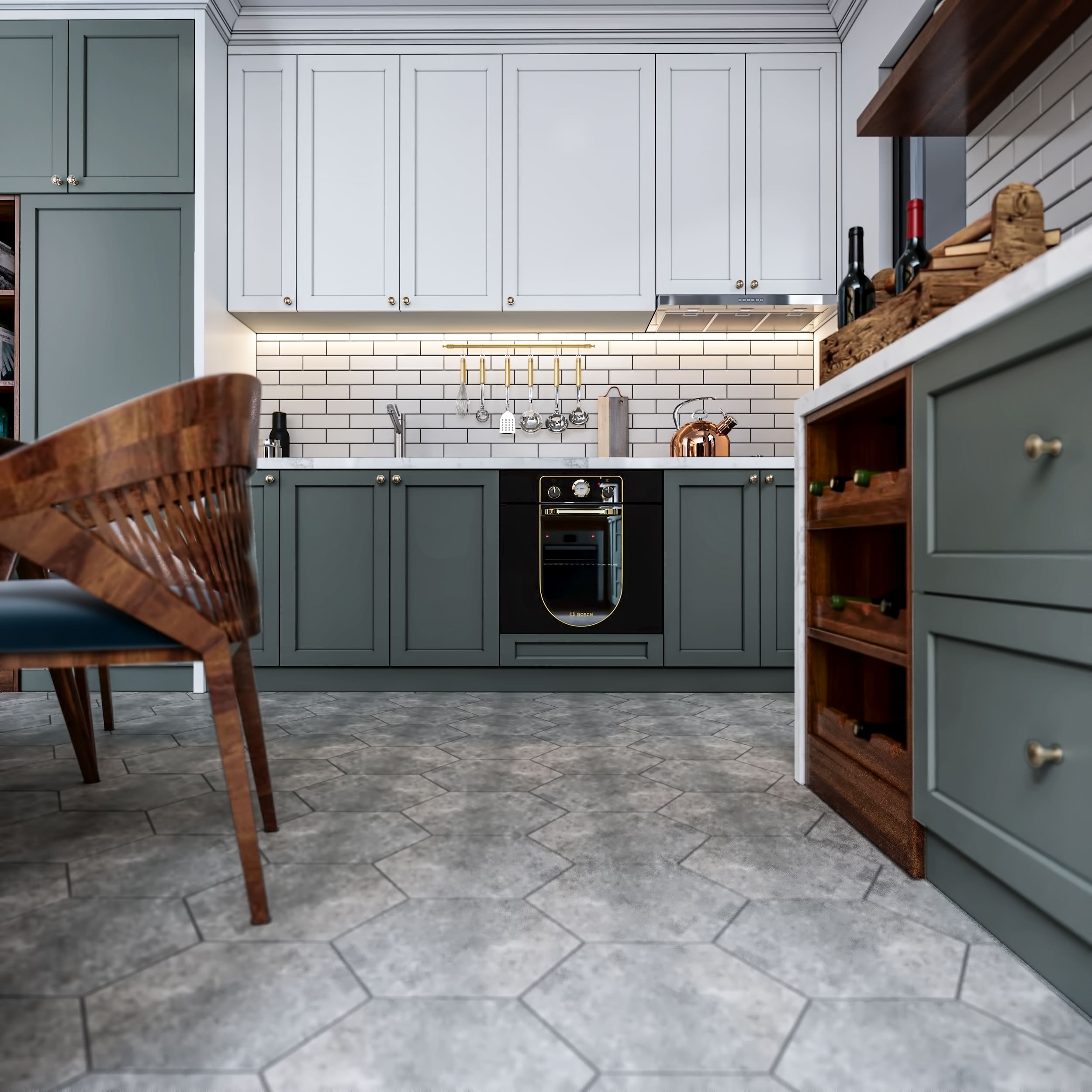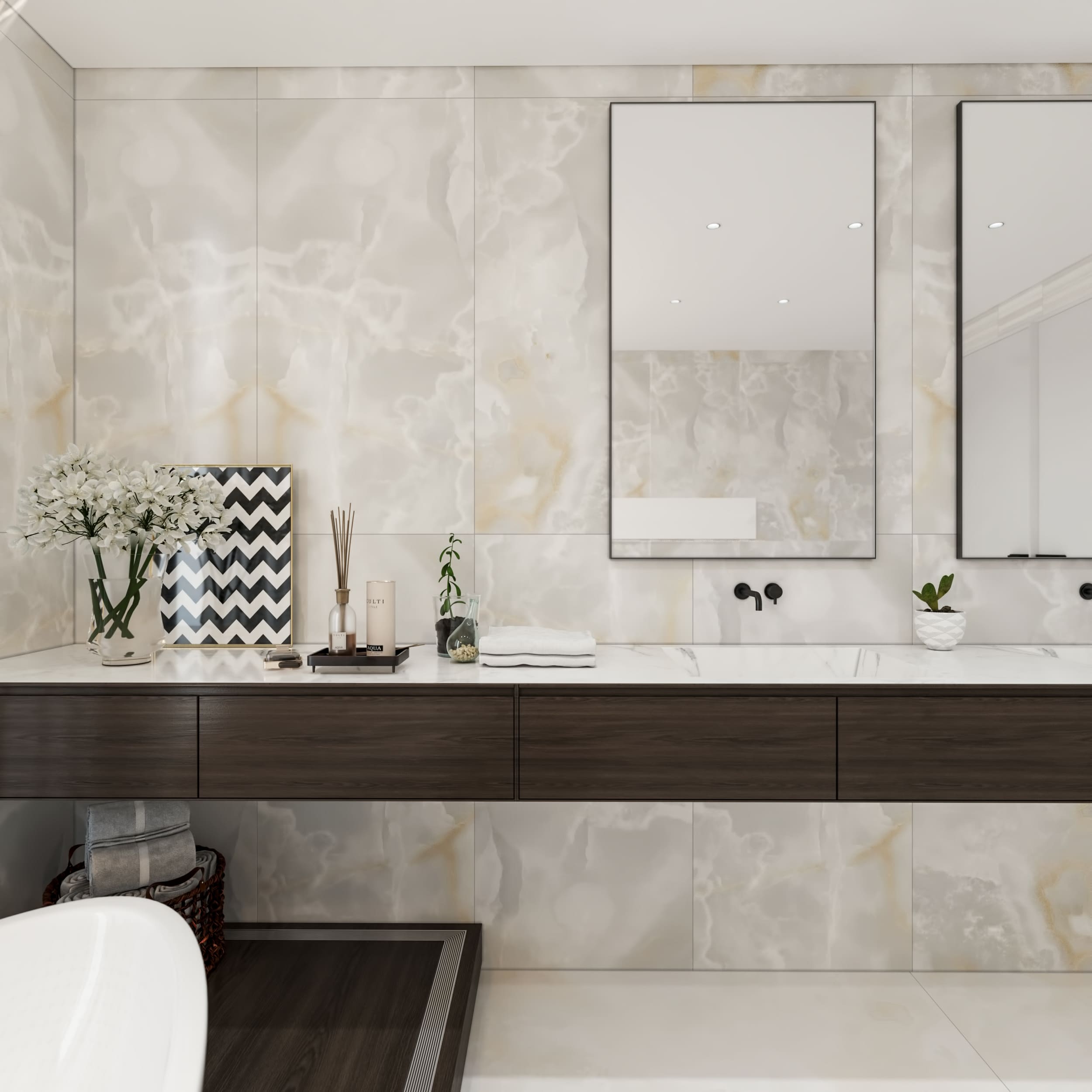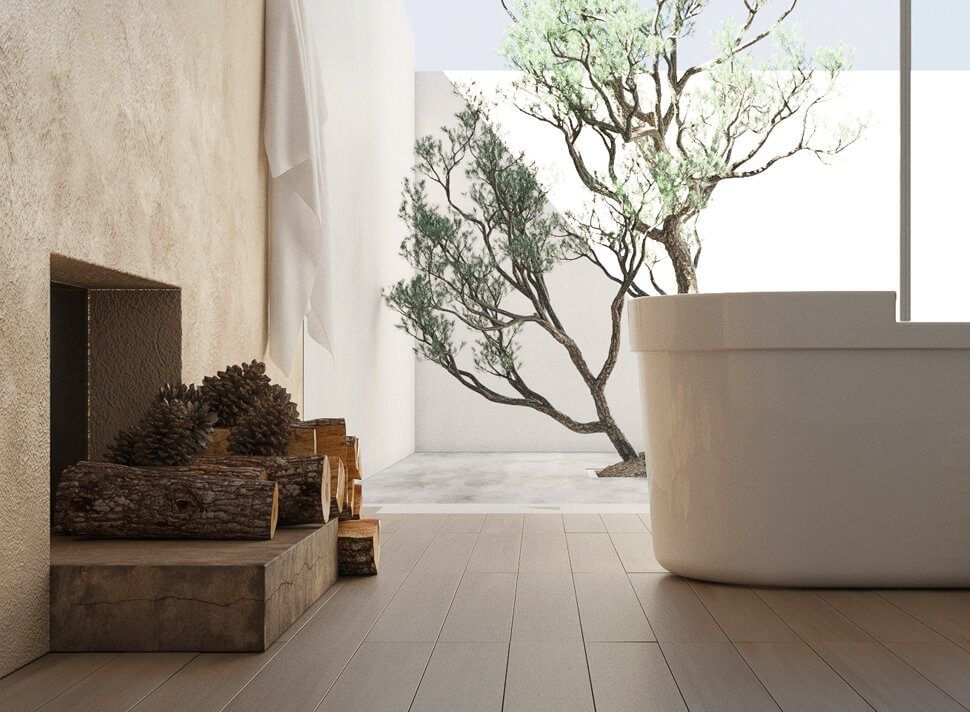Bringing Dreams to Life: The Magic of Interior House Rendering
The journey from a mere concept to a tangible reality is magical in interior design. Turning a blank canvas into a harmonious living space reflecting one's personality and style is fascinating. But how does one bridge the gap between imagination and realization? The answer lies in the art of interior house rendering.
I. The Prelude to Perfection: Understanding Interior House Rendering
Before we delve into the enchanting world of interior house rendering, it's essential to grasp the essence of this transformative process. Interior house rendering is the creative bridge that connects a designer's vision to the physical manifestation of a living space. It's a meticulously orchestrated dance of technology, artistry, and innovation.

Image from Yousee Studio
The Power of Visualization
Interior house rendering is, at its core, about visualization. It's the ability to see the finished design as a sketch or blueprint and as a vivid, three-dimensional representation. This visualization is an indispensable tool for designers and clients, as it allows them to explore the design, make informed decisions, and ensure that every detail aligns with their aspirations.
Technology as the Enchanter's Wand
Technology serves as the enchanter's wand in the digital age, breathing life into design concepts. Advanced software, like AutoCAD, SketchUp, and Revit, enables designers to craft intricate models and lifelike renderings. These digital tools provide unparalleled precision, ensuring that the result mirrors the initial vision.
II. The Artistry of Rendering: Painting with Pixels
True artistry begins once the foundation of interior house rendering is laid. Rendering is akin to an artist's canvas, where every pixel shapes the final masterpiece. Here, we unravel the artistry involved in creating these visual wonders.
Crafting Realism
The hallmark of exceptional rendering is realism. Designers meticulously choose textures, colors, and materials to recreate a space's real-world look and feel. Every detail matters, from the grain of hardwood floors to the sheen of polished marble countertops. With each rendering, the goal is to make it indistinguishable from a photograph of the completed project.
Playing with Light and Shadows
Light is the brushstroke that adds depth and dimension to a rendering. Designers are akin to cinematographers, strategically placing virtual light sources to cast soft, inviting shadows and create a play of highlights and lowlights. The interplay of light and shadows evokes a sense of warmth and realism, making the viewer forget they're looking at a digital representation.
Navigating the Uncanny Valley
While realism is the target, there's a fine line to tread. The term "uncanny valley" is used to describe the unsettling feeling people get when they come across something that looks very close to being human, but not quite. In rendering, this phenomenon occurs when a visual representation is almost lifelike but falls short in some aspects. Skilled rendering artists navigate this valley expertly, ensuring their creations are believable yet comfortably distinct from reality.
III. The Client's Alchemy: Turning Dreams into Directions
Interior house rendering isn't just a tool for designers; it's also a powerful ally for clients. We uncover how clients leverage this magical art to shape their dream homes.
Making Informed Decisions
For clients, one of the greatest gifts of interior house rendering is the ability to make informed decisions. Imagine standing at the threshold of your dream home virtually. You can explore various design options, experiment with color palettes, and swap out furniture until you find the perfect combination. This level of interaction empowers clients to participate in the design process actively.
A Shield Against Surprises
Surprises seldom welcome guests in the realm of home construction or renovation. They often bring additional costs and delays. Rendering acts as a shield against such unwelcome surprises. Right down to the most minor details, clients can see exactly what the finished project will look like. This clarity ensures everyone involved, from designers to contractors, is on the same page, reducing the likelihood of unexpected changes.
IV. The Evolution of Magic: From 2D to Virtual Reality
As with any art form, interior house rendering is not static; it evolves with time and technology. We embark on a journey through the evolution of rendering, from its 2D origins to the immersive realms of virtual reality.

Image from Yousee Studio
The Era of 2D Renderings
In the past, rendering was primarily a 2D affair. Designers used sketches, blueprints, and basic drawings to convey their ideas. While these 2D renderings were valuable, they lacked the depth and realism that modern technology affords. Clients had to rely on their imagination to bridge the gap between a flat image and the three-dimensional space it represented.
The Advent of 3D Renderings
The transition to 3D rendering was a game-changer. It allowed designers to create models that closely resembled the final product. Clients could now explore their future homes from multiple angles, getting a clearer design picture. This marked a significant step toward eliminating misunderstandings and misinterpretations.
Embracing Virtual Reality (VR)
The latest leap in rendering technology catapults us into virtual reality. With VR, clients can enter their designs, virtually walk through their homes, and interact with the environment. It's a level of immersion that was once confined to science fiction but is now a part of the designer's toolkit.
V. Practical Applications of Interior House Rendering
1. Real Estate Marketing
In the world of real estate, first impressions are everything. Interior house rendering plays a pivotal role in creating compelling property listings. Prospective buyers can explore virtual walkthroughs, experiencing the property as if physically present. This immersive experience attracts potential buyers and accelerates the decision-making process.
2. Architectural Visualization
Architects and designers utilize rendering to breathe life into their blueprints. It allows them to assess design feasibility, make necessary adjustments, and present concepts to clients vividly. Whether it's a commercial building, residential complex, or public infrastructure, rendering aids in communicating ideas effectively.
3. Furniture and Interior Design
Interior designers and furniture manufacturers leverage rendering to showcase their creations. Clients can see how different furniture pieces complement their living spaces. It's a valuable tool for experimenting with layouts, color schemes, and décor, ensuring the result aligns with the client's vision.
4. Renovation and Remodeling
For homeowners embarking on renovation projects, rendering serves as a guiding light. It allows them to visualize the proposed changes, ensuring the renovations align with their expectations. This prevents costly mistakes and ensures that the final result is a perfect match for their vision.
VI. The Ripple Effect: Industries Transformed by Rendering
1. Film and Entertainment
The film and entertainment industry has embraced rendering with open arms. From creating visually stunning CGI (Computer-Generated Imagery) in movies to developing entire animated worlds, rendering has become an indispensable tool for storytelling. It blurs the lines between reality and imagination, captivating audiences worldwide.
2. Video Games
In video games, rendering is a game-changer, quite literally. Game developers use rendering to create lifelike environments, characters, and special effects. The level of realism achieved through rendering technology immerses players in rich, interactive worlds, enhancing the gaming experience.
3. Automotive Design
The automotive industry relies on rendering to design and prototype vehicles. Engineers and designers can create virtual models, assessing their aerodynamics, aesthetics, and functionality. This expedites the design process and enhances the safety and performance of vehicles.
4. Fashion and Apparel
Fashion designers employ rendering to visualize clothing collections. They can experiment with fabrics, colors, and patterns in a digital space before producing physical prototypes. This reduces waste in the fashion industry by ensuring that only the most refined designs make it to production.
VII. The Future: Where Technology and Creativity Converge
As we peer into the future of interior house rendering, we see a landscape shaped by innovative technologies and boundless creativity.

Image from Yousee Studio
1. Virtual Reality (VR) and Augmented Reality (AR)
Integrating VR and AR into rendering revolutionizes how we interact with design concepts. Imagine donning a VR headset and walking through your future home, making real-time adjustments to the layout and aesthetics. It's a level of immersion that was once the stuff of science fiction but is now becoming a reality.
2. Artificial Intelligence (AI)
AI is enhancing the efficiency of rendering processes. Algorithms can analyze design data and suggest optimizations, saving time and resources. AI-driven rendering engines can also adapt to user preferences, creating designs that resonate on a personal level.
3. Sustainability and Eco-Friendly Design
As sustainability becomes a paramount concern, rendering will play a crucial role in eco-friendly design. Designers will use rendering to simulate the environmental impact of materials and construction methods, ensuring that plans align with sustainability goals.
4. Global Collaboration
The digital nature of rendering allows for seamless global collaboration. Design teams worldwide can work together in a shared virtual environment, fostering innovation and diversity in design concepts.
VIII. Conclusion: The Endless Canvas of Imagination
Interior house rendering, once a niche tool, has become a cornerstone of design and innovation. It empowers architects, designers, clients, and industries beyond interior design. With technological advancements like VR, AI, and AR, rendering's potential is unlimited.
As we navigate the ever-evolving landscape of design, one thing remains constant: the enchantment of bringing dreams to life through the magic of rendering. Whether it's a cozy living room, a futuristic skyscraper, or an otherworldly video game, rendering continues to blur the line between imagination and reality.
In the tapestry of human creativity, rendering is the brushstroke that transforms ideas into tangible masterpieces, proving that the canvas of imagination is boundless.
Contact us at YouSee Studio for captivating 3D renderings and immersive virtual experiences.
Ray Lisbon is a content writer and the author of this article.


